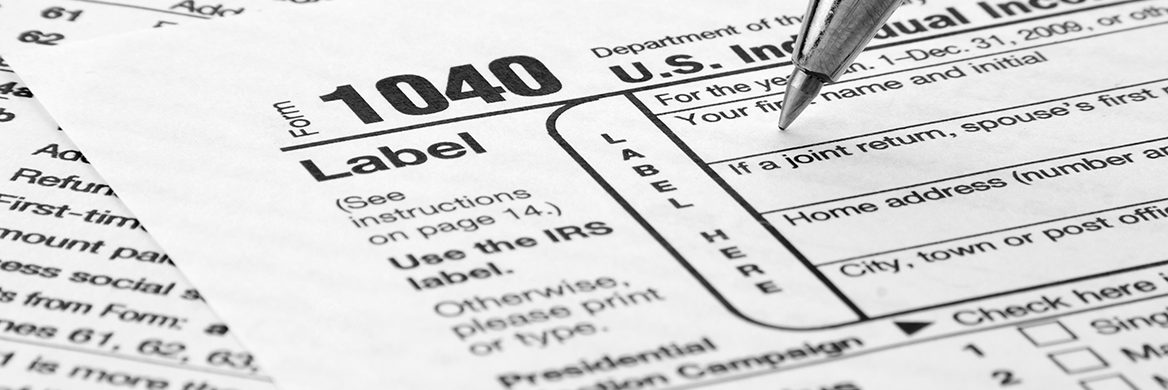As we kick off tax season, the Center on Budget and Policy Priorities’ Get It Back Campaign and the Financial Clinic have teamed up to help you sort through what tax reform might mean for your tax refund, and what you can do to make the most out of tax time. This is part one of a three-part series.
The Get It Back Campaign helps eligible workers claim tax credits and use free tax filing assistance to maximize tax time.
The Financial Clinic builds working poor people’s financial security through direct services, partnerships that embed financial security practices into nonprofits nationwide, and policy campaigns in support of working families.
***
This year, tax time brings several changes that could impact your federal tax refund and change how you file your taxes. The Tax Cuts and Jobs Act (TCJA) of 2017 includes some changes that could leave you with a tax refund different from what you were expecting. Here are six tax law changes you should know.
1. New tax rates
The amount of tax you pay is based on your income bracket. When you file your taxes this year, your tax bracket may be slightly lower or higher, depending on your annual income.
Two other factors that influence the amount of taxes you owe include other tax credits you are eligible for and the amount of taxes you paid in advance throughout the year.
2. Eliminated exemptions
In the past, you could claim personal exemptions for yourself and your tax dependents. These exemptions reduced your taxable income, lowering the amount of taxes you pay. Now, you can no longer claim these exemptions. If your family has one or two dependents, the new standard deduction provides a similar benefit (see #3). If you have more dependents, the elimination of personal exemptions means that more of your income may be taxable.
3. Increased standard deduction
The standard deduction, like other tax deductions, reduces your taxable income, which lowers the amount of taxes you pay. The new standard deduction has nearly doubled.
Here’s how the new standard deduction compares to last year:
| Filing Status | 2019 | 2018 |
| Single | $12,000 | $6,350 |
| Head of Household | $18,000 | $9,350 |
| Married filing jointly | $24,000 | $12,700 |
4. Child Tax Credit changes
The Child Tax Credit helps offset the cost of raising children by giving you money back at tax time. There are three significant changes to the Child Tax Credit (CTC):
- Amount – The CTC is now worth up to $2,000 for each qualifying child under age 17. Previously the credit was worth up to $1,000 per child.
- Minimum income – If you earned more than $2,500 in 2018, you may be eligible for the refundable part of this credit worth up to $1,400 (also known as the Additional Child Tax Credit). This means that even if you don’t owe taxes, you will still receive the refundable portion as a tax refund.
- Taxpayer identification requirement – Children you claim for the CTC must have a valid social security number (SSN) that authorizes work. As the tax filer, you and your spouse (if present), can have an Individual Taxpayer Identification Number (ITIN) or an SSN.
5. New Credit for Other Dependents (“Family Tax Credit”)
As part of the changes to the CTC, there is a new $500 non-refundable tax credit available that you can use to claim dependents. This includes children 17 and older, children with ITINs, and other relatives (for example, dependent parents). Since this credit is non-refundable, it only helps reduce the taxes you owe and doesn’t provide a refund.
6. Itemized Deduction Changes
If you filed Schedule A in the past, there are several changes to itemized deductions. Three that you should know about include:
- State and local taxes – The amount you can deduct for state and local income taxes, real estate taxes, and personal property taxes is limited to a combined total of $10,000 ($5,000 if married filing separately).
- Home mortgage interest – Interest on home equity loans is no longer deductible. This is one of several changes to this deduction.
- Medical expenses – Medical and dental expenses are deductible if they are more than 7.5 percent of your adjusted gross income (AGI), which is the same as last year. This will increase to 10 percent of your AGI in 2020.
What else do you need to know?
- These tax law changes are temporary. These changes are effective when you file your taxes this year for the 2018 tax year, and expire after 2025, unless otherwise noted. In 2026, these tax laws changes are set to revert to previous levels.
- Professional free tax help is available. There are other changes under tax reform that may affect you. Since there are several factors that can influence the amount of taxes you owe and the size of your refund, it is important to get tax help from a qualified tax preparer. The Volunteer Income Tax Assistance (VITA) program has a network of experienced tax professionals who provide tax preparation for free. Volunteers receive specialized training and must pass a certification exam annually. (There isn’t a similar requirement for paid tax preparers.) Learn how to find a free tax site near you or call your local United Way 2-1-1 service line.
- There are new tax forms. This year, there is one Form 1040 to file (two half-sheets) with other forms available. This form replaces Forms 1040A and 1040EZ. Additional forms that you need to file depend on your personal tax situation.
- Refund delays continue. The Protecting Americans Against Tax Hikes (PATH) Act of 2015 requires tax refunds that include the Earned Income Tax Credit or Additional Child Tax Credit to be held until February 15 so the IRS can check your income against what your employer reported. The IRS strives to issue refunds within 21 days of processing, however, additional delays are possible following the partial government shutdown. If you’ve submitted an ITIN renewal with your tax return, expect further delays since your ITIN application must be processed before your tax return.
We hope this helps you get started planning for tax season! Be sure to check back next week for Parts II and III of the blog series:
- Part II: How Can I Make the Most of My Tax Refund?
- Part III: How Can I Plan for Changes to My Refund?
***
This blog series is co-authored by The Get It Back Campaign and the Financial Clinic. Be sure to check out other helpful blog posts from The Get It Back Campaign and the Financial Clinic.








